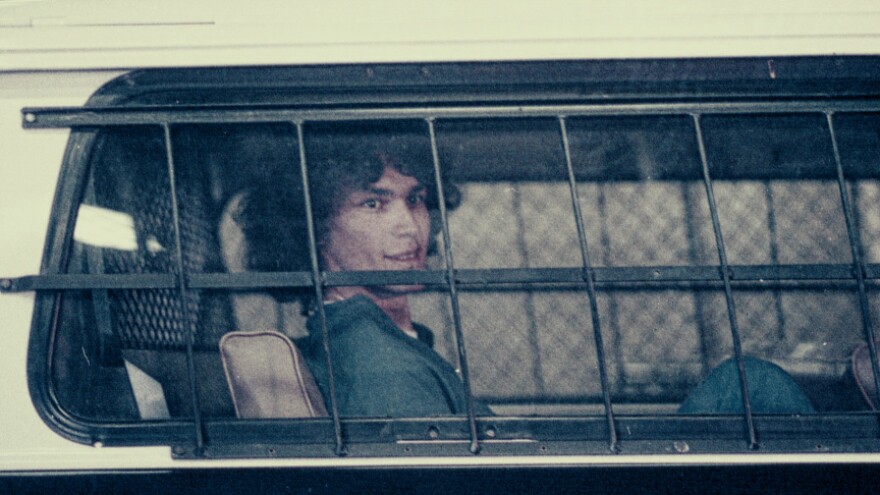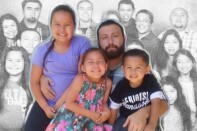Truth matters. Community matters. Your support makes both possible. LAist is one of the few places where news remains independent and free from political and corporate influence. Stand up for truth and for LAist. Make your year-end tax-deductible gift now.
Serial Killers Were Once Prominent in California. Not Anymore (Which Is A Good Thing). But What Changed?

California has been home to some of America's most famed and feared serial killers, particularly in the 1970s and 1980s, when names like the Night Stalker and the Zodiac Killer dominated headlines. But today, you're more likely to see those names on Netflix than in your newspaper. That's because we just don't see as many serial killers these days as we have in decades past.
Now, serial killers aren't completely gone — just last year, police in Stockton arrested a 43-year-old man and charged him with seven counts of murder in a string of shootings that spanned a year and a half.
So, what changed?
Better forensics
A few things, according to Judy Ho, a forensic neuropsychologist and Pepperdine professor, who was a guest on our newsroom's public affairs show, AirTalk — which airs on 89.3 FM.
One that may seem fairly obvious: key advances in forensic science and how law enforcement uses genetic data.
This was most recently in the public eye with the capture of the Golden State Killer, Joseph DeAngelo, who was arrested in 2018 and charged with 13 murders, 51 rapes, and hundreds of burglaries across the state over a 12 year period in the 1970s and 80s.

"So this idea of genetic approaches, tracking offenders, the fact that we're more on high alert, the fact that there's more systematic protocols to root out people, especially when they start to commit crimes that are of a violent nature," Ho told AirTalk host Larry Mantle.
Ho says that, in the case of "The Night Stalker," Richard Ramirez, today's DNA technology would almost certainly have allowed investigators to identify and capture Ramirez much sooner. Ramirez carried out a string of murders, burglaries and sexual assaults between 1984 and 1985, and was convicted and sentenced to death in 1989, though he died in jail waiting to be executed.
Smarter tech
She also pointed to the advent of smartphones, and says while we all know our phones collect data on us, most people likely don't realize just how much. Ho told us:
"What we're finding, especially with these more recent murders, is that people don't usually leave their phone somewhere. They take it with them at all times, and when they think that data is not being tracked, it is."
The power of knowledge
We've also gotten better at identifying and reforming potential serial killers before they become household names, she says. Lonnie David Franklin, Jr., better known as the "Grim Sleeper" was caught by police after a DNA sample from his son led police to him.

"When people commit serious crimes, there's usually a combination of possible genetic and familial risk factors as well as what's in their environment," Ho says. "And sometimes if we get to them early enough and provide them with a structure and support that they need, they don't go down that road, or at least not as severely."
Today, serial killers have given way to mass shooting incidents, which we see much more frequently now. Ho says in many cases investigators are able to go back to the individual's social media and talk to people they knew, and often times it will become clear that there were signs they may have been in distress. She says it speaks to the continuing need for parents, friends, teachers, and law enforcement to be proactive in identifying people who may be at risk of committing violent crime before they hurt someone. But that's easier said than done.
I think it's hard because we don't wanna invade people's privacy.
"I think it's hard because we don't wanna invade people's privacy," she says. "Sometimes we think, 'what if we go to law enforcement with this and then they laugh it off?' Or, 'what if I embarrass myself because they find out that I'm the person who said something about this and actually the person is completely okay?'"
Ho says while serial killers may not be as prominent as they once were, it doesn't mean they aren't still out there. So, as the saying goes, if you see something, say something.
"I always encourage, if you think anything at all is problematic or suspicious, the worst thing that could happen is they investigate and they don't think there's anything untoward. You could save so many lives."










